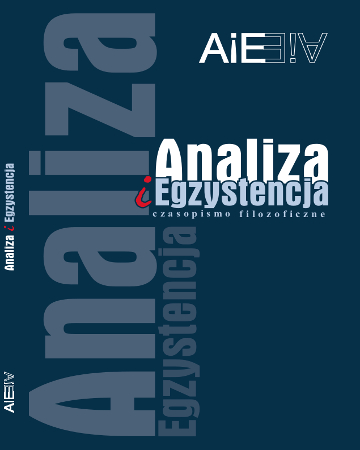
We kindly inform you that, as long as the subject affiliation of our 300.000+ articles is in progress, you might get unsufficient or no results on your third level or second level search. In this case, please broaden your search criteria.

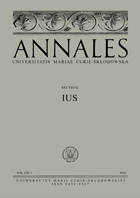
The article discusses the issue of equitability of the law of the People's Republic of Poland. The author bases the theory of equitable law ou the following values: truth, good, justice and human dignity. Equity, thus understood, pertains to the processes of both making and applying law. The article defines the above-mentioned values. It adopts the basic classical understanding of truth as the adequation of intellect to things (veritas est adaequatio intellectus et rei). Creating norms involves the truth about the reality, induding the truth of the existential dimension of the human being that is to be (should be) the starting point for making equitable law. Good is understood as the good in the moral sense as the good of man and the common good. Justice is understood in the classical sense, i.e. it is about 'rendering every man his due' (ius suum cuique tribuendi). The dignity of man as one of the values coustimring equity is understood as inherent (innate) inalienable and indestructible, i.e. the individual dignity. It is the basis of human rights. It is the basis and source of all human rights and their protection. The study undertaken indicates that the law of the Polish People's Republic flagrantly violated each of the values that make up equity. Thus, it was not equitable law. In particular, the law was based on the reductionist concept of man (anthropological error), was of class character (the dictatorship of the proletariat or actually the Marxist-Leninist party), and violated the common good and the good of man. Individual dignity (innate and inviolable) was negated (was not a legal category), the source of freedom and rights was the will of the authority (man did not have own rights - he only bad as many rights as granted by the authority). It majorly violated justice, one manifestation of which was the political class character of the judiciary. Moreover, law was treated instrumentally. There was a discrepancy between the content of law and the practical application of norms (the divergence of the nonnative and the actual reality).
More...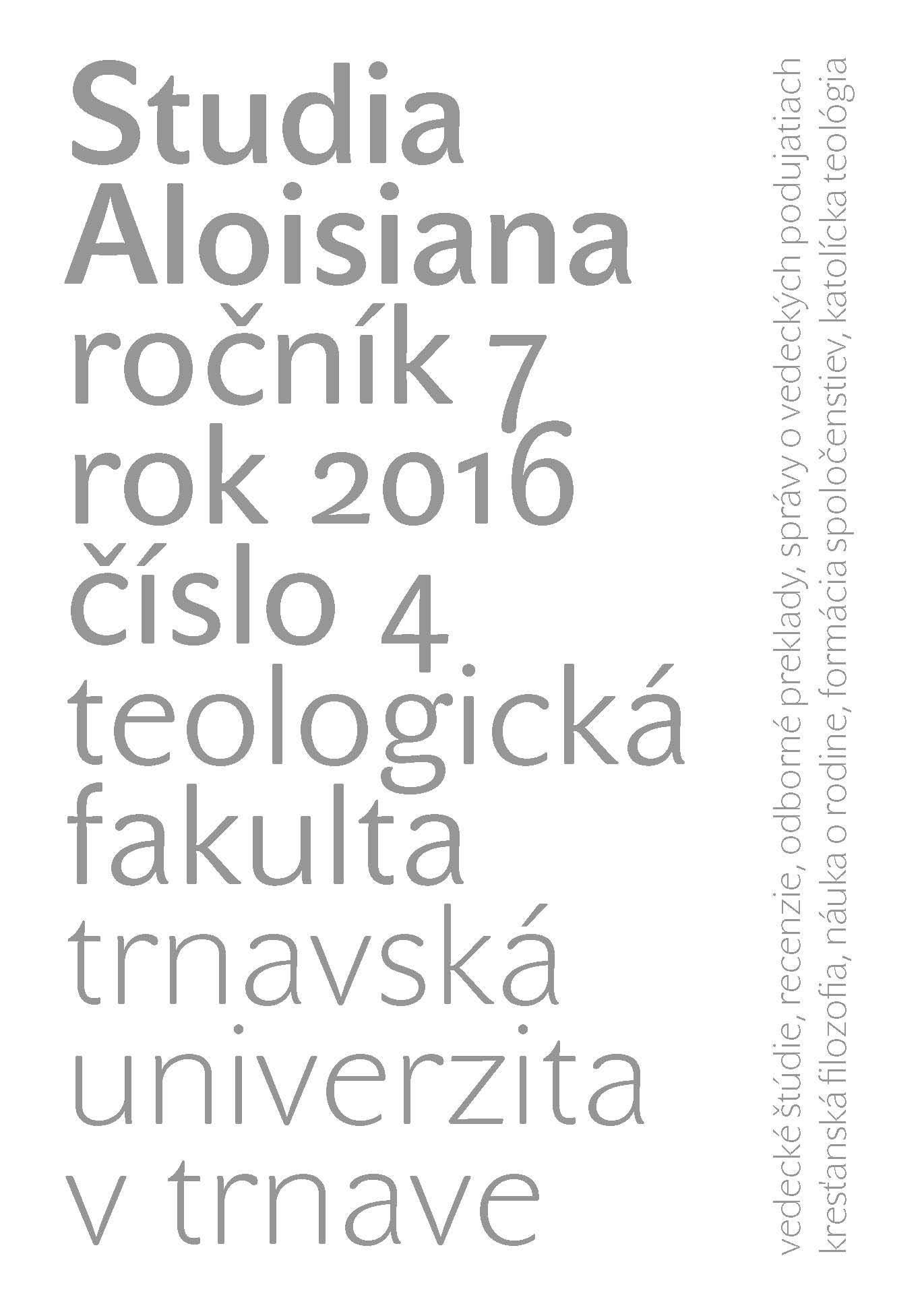
The aim of this paper is to find Camus’s and Sartre’s answer to logic and nihilistic freedom of Ivan Karamazov. In contrast to Karamazov Sartre and Camus used freedom to find the way for morality without God. Sartre based his “philosophy of freedom” on postulate: existence precedes essence and defined man as never done project. Camus created his concept on revolt against absurdity and came to solidarity and request an active position. They both see freedom as a burden, but burden with necessity to carry, not to throw away.
More...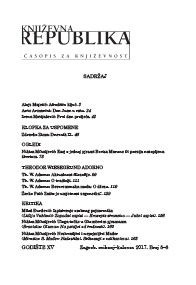
Od svih pet duhovnih iskustava iskazanih jezikom i slikom, koje Ernst Cassirer naziva simboličkom formama odnosa mišljenja i bitka, samo se jednome ne može pripisati zaokruženost samoodređenja. Dok se, naime, mit, religija, filozofija i znanost povijesno uzdižu iz stadija prirodne neposrednosti zora, potom poprimaju likove umne i osjetilne usmjerenosti na predmet izvan vlastita diskurzivnoga djelokruga, samo je umjetnosti ostavljeno pravo da bude nesvodljivom u svojoj posvemašnjoj neodređenosti.
More...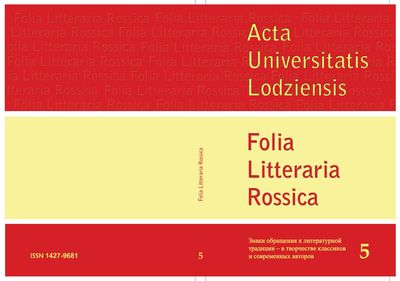
This article concerns the antinomic installation of everyday life and life in the later works by Marina Tsvetaeva. The author, referring to Tsvetaeva’s works, highlights the importance of conflict of everyday life and being and shows its «specific» semantic value in Tsvetaeva's poetry. Antinomy of life and existence is modeled through the multiple ontological oppositions of «down – up», «earth – sky», «body – spirit» and others. The author proves that Tsvetaeva’s conflict between everyday life and existence can be solved. Firstly, the romantic mismatch of the world of the earth, associated with a lie, to the world of heaven, which is essentially the ultimate truth, lies in this conflict. Secondly, an important component of this conflict is the love line, which turns out to be a sort of psychological key to conflict of everyday life and existence.
More...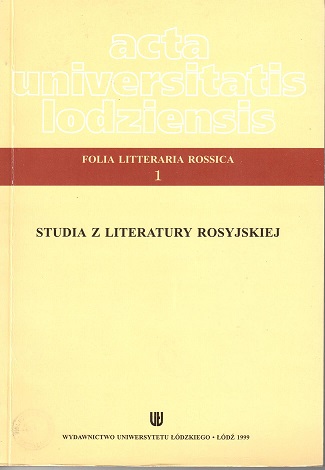
The song of Vladimir Vysotsky Fused candles - this is a lyrical poem about succeeding life and death, about a man killing the world of objects, nature and space, about the repetition of everything. The poem is written with a two-legged anapaest, in odd-numbered lines, hyper-catalytic. Accompanying his musical text is written in a waltz-like rhythm of 3/4. It should be noted that the lexical stress corresponds to the musical stress. The song in question was translated into Polish three times. These were translations of Bojtseh Pashkovich, Vaclav Kalet and Andrzej Mandalyan. Two of them retain the versioning scheme of the original, one (V. Pashkovich) replaces it with repetitive even seven-syllable lines, replacing simultaneously Russian male rhymes with Polish female ones, which, however, does not violate the musical layer of the work. The main element of the lexical-semantic plan of the song is a chain of associations that repeat images-symbols of death and life, and at the same time symbolize repetition. The translated texts are to varying degrees compliant with these images and this composition by V. Vysotsky. Despite the fact that the interpreters used the strategy of reconstruction, design and deconstruction of the text in translation differently, they reacted differently to the musical plan of the work, and in spite of the fact that in their Waxing candles there appeared all kinds of mistakes and inaccuracies, we note that all They tried, as it seems to us, to convey the basic idea of V.Vysotsky's poem and its form - the form of the author's song.
More...
The phenomenon of death is fundamental both in the cultural development of mankind (nation) and in a person’s life because it is a part of human existence. Death is related to a person’s physical and spiritual life and one’s efforts to keep them. That is the reason people are haunted by different kinds of fear: total vanishing, perversion of spiritual nature, pain of loss, moral suffering, and vacuity – that bring negative experience and thus force them to look for ways to overcome or escape it. Death has caused diverse experiences expressed through the symbols of spiritual culture of every nation. The analysis of fairy-tale stories reveals that symbols can be explained as external and internal factors associated to vanishing-deathnon-existence. The interpretation of symbols reveals the ways nations try to overcome such experience. The article is of value, not only from the historical-cultural and philosophical point of view, but also from existential-axiological one for those seeking the unity with the inner self and those trying to establish and preserve a notional relationship to the Lithuanian cultural tradition. The analysis of the article utilizes the basic attitudes of hermeneutical philosophy and psychoanalysis.
More...
The article deals with relationship between media, religion and philosophy. The rise of new media and changes in the relationship between all (old and new) members of media family initiates exactly the philosophical questions that usually arise during tectonic breaks of social and individual life. The author raises the question whether the Church, hardly using amphitheatric mass-communication, is so innocent to be totalitarian or, conversely, it is too authoritative to change the means of communication. Communication is an affair of existence, i.e. of being towards death. Communication is desperately attempting to leave a trace in the codified battlefield of culture while we are struggling with anonymous codes. The new code breaks the old one by transferring an existential region to the centre of thought. Jesus Christ could be communicated as God only by recognizing his suffering which is possible only by being a human. Therefore, the Passion is a guarantee of communication both between the participants of the Christian community and between the limited human being and the unlimited God. By appealing to the borders of human body, the Passion refers to a sphere beyond the existential region. By the mediation of the senses, a church includes us in a venture of existence when our finite time has been disproportionately elongated in both directions. Philosophy is possible only by communication and in communication with other branches of human activity as religion or politics.
More...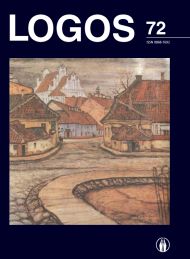
Keeping within the framework of analytic philosophy, the article examines Anselm of Canterbury‘s “ontological proof for God’s existence”, which, according to prevailing view, most clearly reveals specifics of pre-scholastic speculative thought. In the Anglo-Saxon tradition, the question of the logical validity of this proof is a matter of relevance, but this article highlights the aspect of the proof‘s soundness. After all, as it is known, formally correct reasoning can lead to false conclusions, and truth is an absolute value for philosophy, i.e. “love of wisdom”. The article not only attempts to estimate the compliance of “the ontological proof” with today’s standards of rationality, but also aims to clarify to what extent the approaches of an analytical history of philosophy enables us to reveal the intrinsic reason of Medieval thought.
More...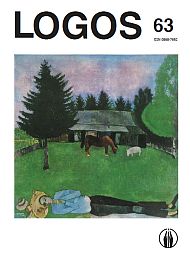
The article deals with the contradictions and interconnections between tradition and novelty from the point of view of existential phenomenology, pictorial hermeneutics, and cultural regionalistics. The following theses are presented in the article: tradition and novelty in historical discourse are inseparable cultural forms; while transmitting certain cultural tradition, history is a communicative channel; historical images are the factors of a national community’s becoming; the aspirations of the participants of certain community are always enlighten by a community’s historical perspective, without which the novel loses its background; media while transmitting cultural forms impoverishes the tradition by robbing novel aspects; pictorial hermeneutics is developed as tradition’s and novelty’s interconnection which presupposes the thresholds and the limits of the different planes of imagination; every cultural phenomenon needs a pictorial environment to be changed by imagination; the cultural change follows from the communicative opportunities of a new phenomenon in pictorial tradition; historical imagination covering future aspirations is an aspect of creativeness, which evokes every cultural change.
More...
In the second article the second way of proving God’s existence is considered. The logical form of this way is the copy of the first one but the content is quite new, for it proves not the existence of the first unmoved mover but the existence of the first absolutely immutable maker. In the frameworks of Aristotelian picture of the world (but not in the Christian one) it is quite possible to claim that the first unmoved mover moves as final cause but perhaps there is no such Weltanschauung which would accept the claim that the first efficient cause causes its effects in a same manner as the final cause moves. But the immutability principle inherited from pagan Greek philosophy (Parmenides, Plato, Aristotle) and incorporated in Christian philosophy demands that God would create and recreate the world while remaining absolutely immutable. Even more than that, it demands to preserve absolute divine immutability of descending, incarnating, living, dying, resurrecting, ascending and promising to come again God. This is too much for elementary logic and common sense. Therefore the first two ways to prove Gods existence taken together have to be recognized as the corruption of Christianity by pagan philosophical principle of immutability.
More...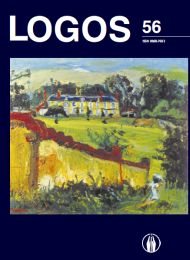
This article deals with the question of emptiness in Heidegger’s philosophy, examining topics such as non finito, un-thought, silence, and ambiguity, which became particularly important in Heidegger's later works. Special attention is paid to the question of interfaces between Heidegger’s and Chinese, particularly Daoist, conceptions of emptiness. My aim is to argue that, particularly in his later period, Heidegger had a sincere interest in Eastern thought, particularly in Daoism and Zen Buddhism, where he found some ideas that were close to his own way of thought - for example, emptiness, nothingness, and non-action. The question of influence‘ of Eastern thought on Heidegger’s work - while interesting, is of secondary significance in comparison with the independent congruence of ideas. So, this essay isn’t devoted exclusively to a comparative analysis of Heidegger’s philosophy and Asian thought. Rather, the author is interested in Heidegger’s interpretation of emptiness, which she found particularly original and insightful. The author shows that the emptiness found in Heidegger’s thought can have different faces - to be for example empty of possibilities or the emptiness of a thing (vessel). The emptiness discussed in Heidegger’s thought could arise as an opening or be the result of appropriation, as well as letting-be or releasement.
More...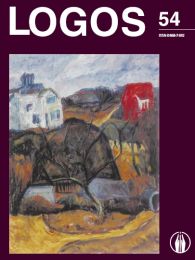
The article deals with the relation between an individual biography and the nation’s history. The author states that the environment both of the individual and the nation is linguistic-written. The next theses are raised: being inscribed into the political environment, the individual’s biography becomes a factor of its development; the political whole is an existential, linguistic and written environment of individual life; an individual creates his biography inscribing his existential history into this environment of mutual interconnections; the political environment is a dynamic open whole thanks to individual’s fight for his biographical whole. According to the author, the biography is a factor of the political body (brotherhood). The inscribing supposes a linguistic-written environment of mutual becoming. The theses are illustrated with help of examples from Lithuanian-Polish history. A special attention is paid to the sources of the Lublin union and to its architects who were influenced by biographical motives. The author presents a hypothesis that the political body of both nations was ruined not by the political brotherhood’s (noblemen’s) anxiousness about its democratic rights but by inadequate symbioses of democracy and aristocracy that did not prevent a hegemony of neighboring political bodies. As well, the author analyses the structure of democracy and its forms. According to the author, there is no etalon of democracy; there are only different forms of democracy. According to the author, as a symbiosis democracy is good, not having many shifts, voices and scriptures, but still able to form a harmonic political body that provides for the existential becoming of its individuals.
More...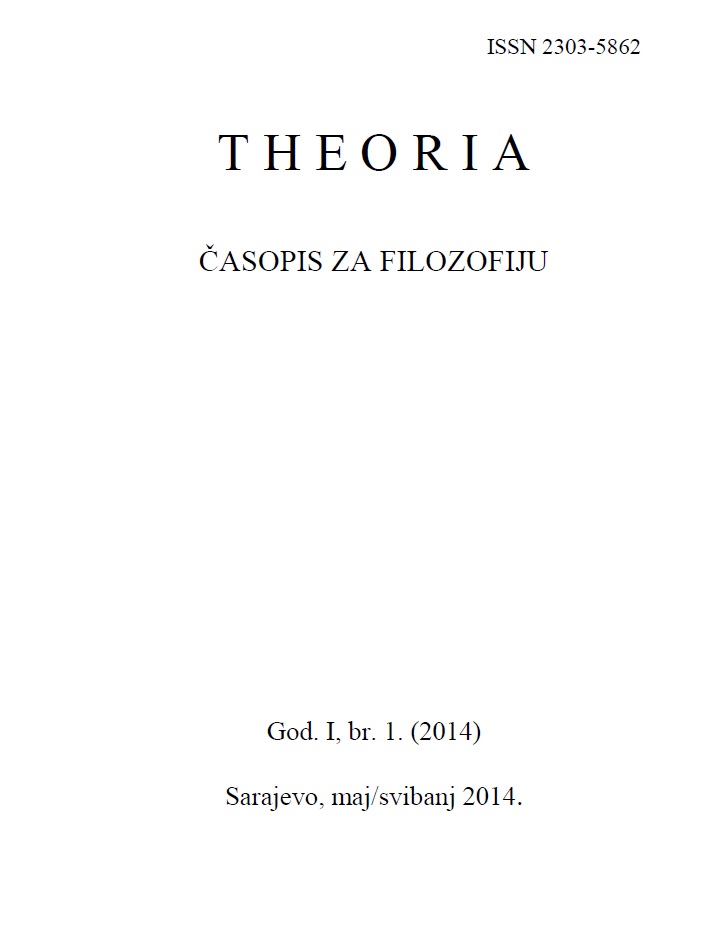
Heidegger's understanding of the world as the place where the existence (life) takes place is determined by man's being in the world and thinking which is reasonably to be in the world. That is how existence and the world are shown as the basis for building a sense. In that direction, we recognize the world and (there – being) Da – Sein in the world as the basis for every possible construction and understanding of the sense, in which we understand life and relations in the world, and that is actually our own experience. Being in the world is the interpretation and understanding of the Da – sein, of to being in the world in which he understands his existence and attitudes that are an integral part of his existence in the world. The world comes as a result of the creativity of the Da – Sein, where the man understands himself and others beings in the time, he understands his own existence and that is how he builds spheres in which he understands life and truth. The world as a place of understanding and interpretation of everything that can happen to Da – Sein is the possibility of all knowing, because everything that cognition determines is determined by the reality of the reality, or, the world in which the reality of life happens as an experience. Perhaps Heidegger's philosophy is the place where the world is clearest shown as a place of building the sense because we are already in the world for Heidegger, and that is what determines us and what enables understanding and attitude towards life, existence and truth. The Existing Man, as a Da – Sein, understands the way of his existence, opens the possibilities for understanding and interpreting his existence as a place of understanding of himself and understanding of others with who he is in his existence.
More...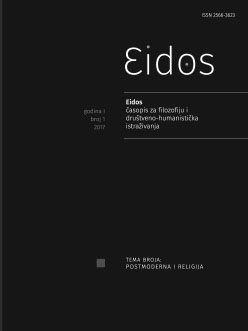
If it is to be judged by Anaxagoras through the phenomenal view of what is noumenal or hidden (opsis adelon ta fainomena) it could be preliminarily concluded that in the same (in this case belief) we have a subjective perspective which is almost impossible to objectify if we do not abandon our own horizon (“look into the sky”). Accordingly, an interesting range is visible: from different modes of belief to unbelief and from ritual-religious to irreligious attitudes. The modern age, also called postmodern, is full of such (micro) theological reflections of the humanworld- absolute relationship. For philosophy such situation is particularly challenging; in contemplating the evidently growing religiosity and its dispersion it is imperative to post- metaphysically reexamine the foundations of classical ontology increasingly accused of being closed, dogmatic and conceptually exclusive.
More...
The essay discusses the structure of the postmodern world and the possibilities of its expression in conditions where the world itself and the language of the world are no longer near and close. Thus divinity in the postmodern world appears as a kind of «dwelling» in a language in which God´s inexpression and immeasurability actually reveals His existence and His greatest potential. In this sense, the metaphor becomes the «highest» metaphysics, the «method» of mysticism, in which different religious cultures and traditions define their contents.
More...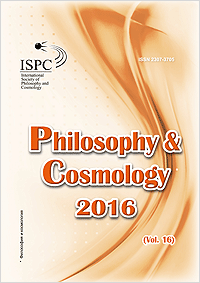
Historically known for three major types of philosophy, that developed in parallel in every human civilization, and therefore do not exclude each other, and in accordance with the principle of subsidiarity only complement each other in many different respects: scientific philosophy, anthropology and religious philosophy. The more we come to know and deeply immense world around us, the more clearly and insistently arises the main philosophical question: why something exists? After all, it would be easier if there was nothing at all, including the people asking this tricky question. Nevertheless, the world still exists (according to the “anthropic principle”), but, I ask, why? It does not matter, the existence of which there is a speech: the “matter”, “God”, “absolute spirit” or something completely different. That search for an answer to this question (why should something there?) Is the true purpose of philosophy if at all, the problem is solvable (in the sense of Kant’s “metaphysics”). And then there is a special philosophical category “existence”, which requires a special study.
More...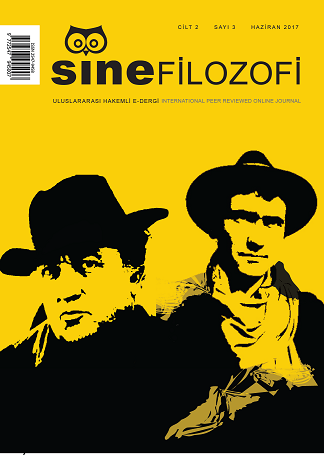
In Ancient Tragedy, where we find the roots of tragic thought, it has been agreed that, the life on earth is full of misery and pain; however, every incident occurring on earth is actualized by the will of the gods in Olympus. This agreement ensures enduring the living with its most hurtful and scariest face by finding divine will behind this life. Thus, the heroes of the Ancient Tragedy do not regret anything and take all the responsibilities of all their actions, even they are tested with most formidable griefs. Because this endless pain caused by their actions is actually a necessity of the eternal side of their personalities, there is a seal of divinity. At this point, we can find the expression of the conflict between factivity and infinity, in the discrimination of Apollo and Dionysus formulated by Nietzsche. As Apollo is the God of shape and commends golden mean, Dionysus saves the humans from the limits they are imprisoned in and unifies them with their nature. The key of reaching the tragic comprehension is strengthen our connection with Dionysian area. Dionysus saves us from the illusions of the appearances and reduces the worries and aches derived from the possible losses in the living, prevents the passive way of existence. Therefore, the triumph of Dionysus in this rivalry also conveys the legitimation of life even with its most horrifying side, which carries the essence of the tragic. Accordingly finding the bases of tragic comprehension in affirmation, we can see this comprehension in other narratives. In this study, we will trace the tragic thought in the cinema, one of the most massive and efficient narratives in our age. Because, realizing our possibility to reach the tragic comprehension, also contributes us to legitimate our own existence. In this context, Barton Fink (Ethan and Joel Coen, 1991), The Wicker Man (Robin Hardy, 1973) and Badlands (Terrence Malick) films, which present various views of Dionysus, are pretty suitable examples to guide us. In our study, we will examine the continuous tragic comprehension dating from Ancient Tragedy via these examples.
More...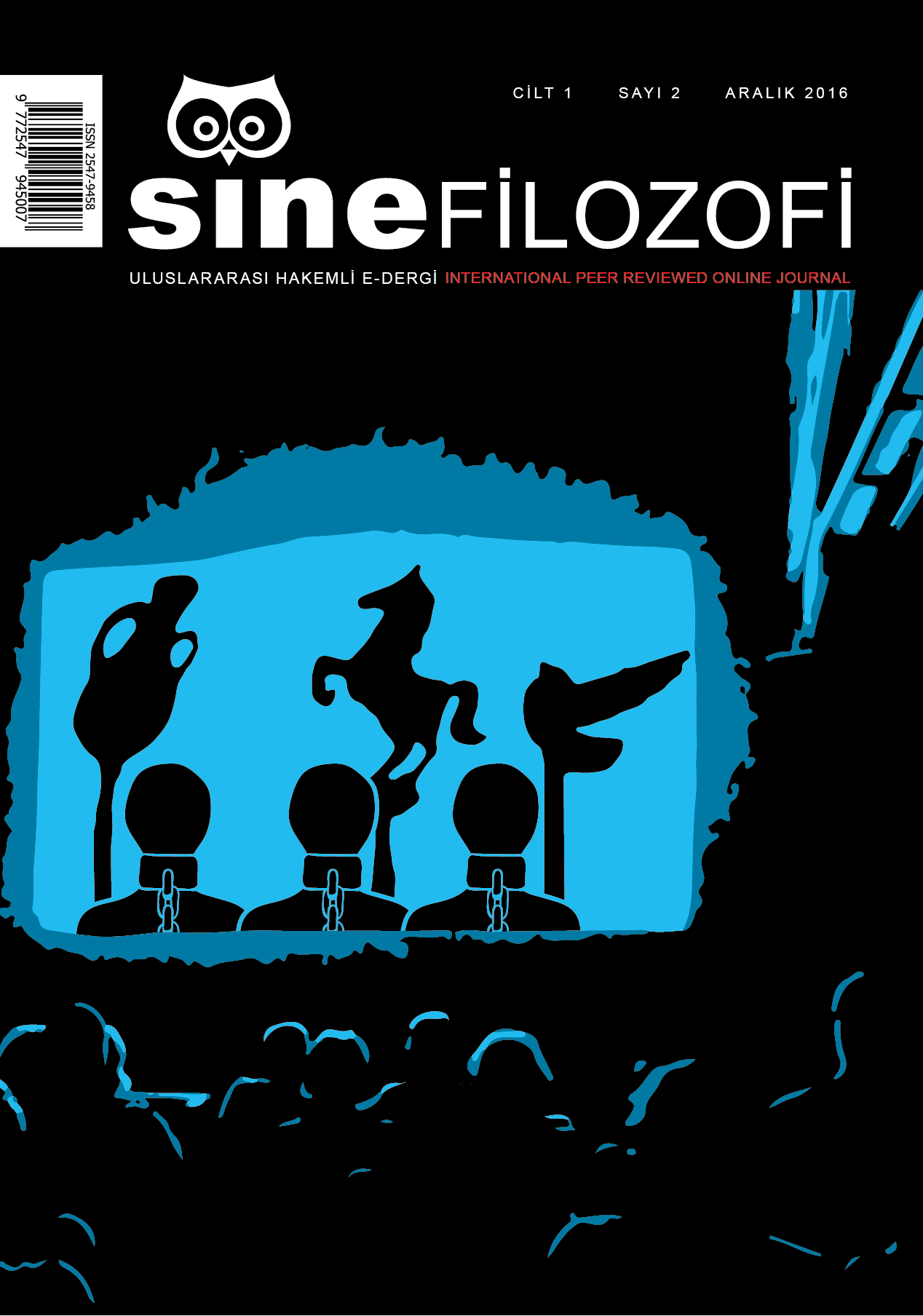
How can a movie think about the flow of time? On the infinite complexity of causality; decisions, accidents, "ifs", sometimes moments when we are not aware, in short how does cinema think about the chaotic uncertainty of time? The main purpose of this paper will be to think about a pure thought of a ‘‘whole’’ regarding the conception of chaos, which transcends social roles and hundreds of factors establishing our identities, and then try to trace these ideas in cinema. While cinema is showing the uncertainties in our lives, it will create other qualitative leaps. That is precisely why cinema is not a collection of images that does not have any material weight. A film carries the latent powers of “thinking” that is waiting to be transformed into infinite things. This paper will discuss the question above in the context of cinema’s montage element.
More...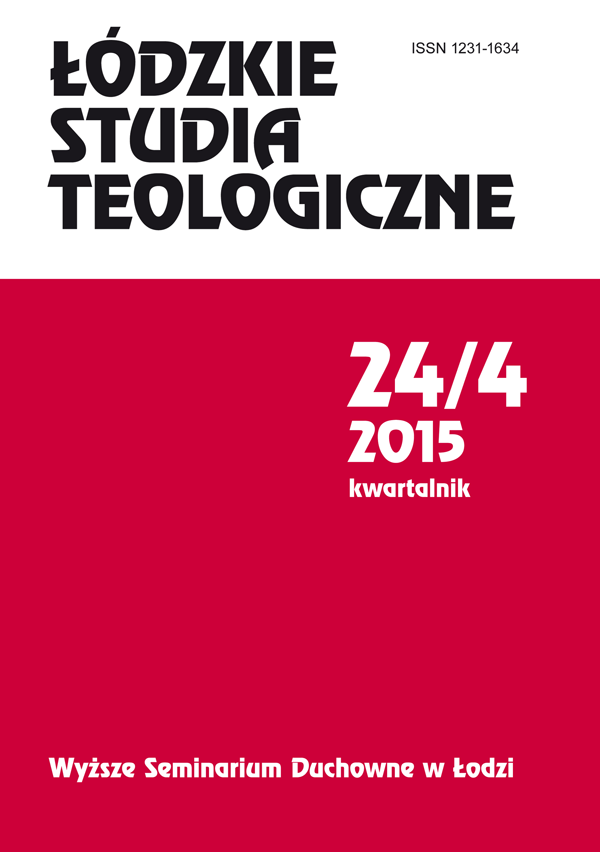
Divine Mercy is for man the reality which is both mysterious and hopeful. Out of the richness of the Bible the author points out only selected data: he analyzes biblical vocabulary, which turns out to be the invitation to the participation in the mystery of the Divine Mercy, he focuses on the sense of the mercy as meeting spiritual and temporal needs. He points out to God who makes man an active protagonist of the Divine Mercy mystery. This mercy is presented as a gold thread, as the heart of the whole God’s activity, of the whole creation and salvation, giving life, coming with rescue and giving fullness of life.
More...